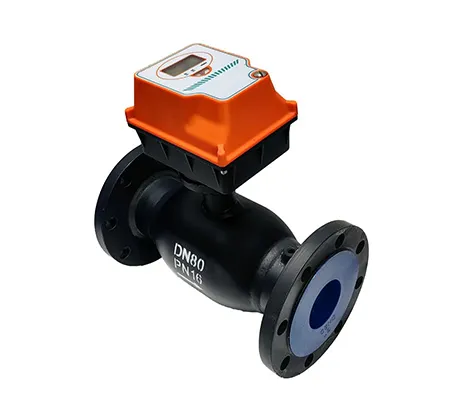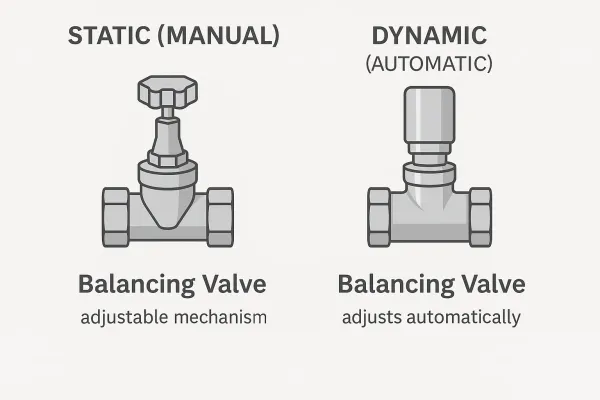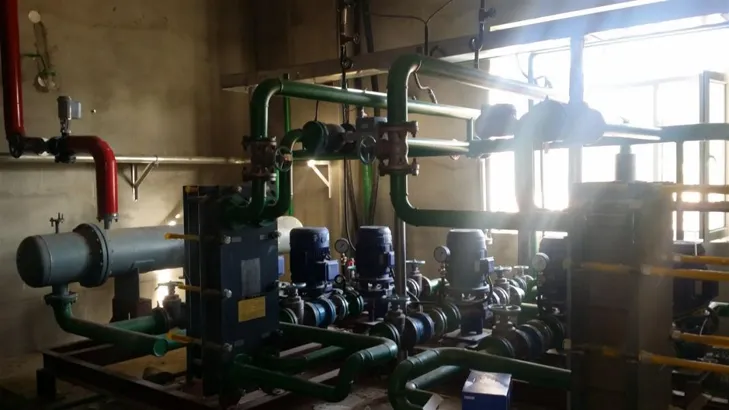لتجنب تأخير الرد على استفسارك، يرجى إدخال رقم WhatsApp/WeChat/Skype الخاص بك مع الرسالة، حتى نتمكن من الاتصال بك في المرة الأولى
سنقوم بالرد عليك خلال 24 ساعة. إذا كانت الحالة عاجلة، يرجى إضافة واتساب: +8613188899036، أو WeChat: 0531-87968777. أو اتصل على 0531-87968777 مباشرة.
* نحن نحترم خصوصيتك، وجميع معلوماتك محمية. سنستخدم معلوماتك فقط للرد على استفساراتك، ولن نرسل لك رسائل بريد إلكتروني أو رسائل ترويجية غير مرغوب فيها.
When a building’s heating or cooling never feels quite right, or an industrial process wastes energy, the real issue is often poor balance. Left unchecked, this hidden problem drains efficiency, increases costs, and causes headaches for everyone from engineers to facility managers. What’s the solution? صمامات الموازنة—the quiet workhorses of any well-designed flow control system.
Balancing valves ensure that water or other fluids are distributed evenly and efficiently throughout a piping network, preventing overflows, underflows, and temperature swings. Whether manual or automatic, these valves play a vital role in optimizing performance, energy use, and comfort in HVAC and industrial applications.
أ صمام الموازنة is a precision flow control device designed to regulate and stabilize the distribution of fluids—typically water—in a piping network. The main purpose of this valve is to achieve optimal balance across all branches of a system, preventing some circuits from getting too much flow and others too little.
In a modern نظام التدفئة والتهوية وتكييف الهواء or industrial plant, lack of balance leads to energy waste, equipment wear, and uneven heating or cooling. Balancing valves directly address this by maintaining the correct flow rate and differential pressure, ensuring each zone or process gets exactly what it needs.
| Flow Imbalance Problem | Resulting Issues | How Balancing Valves Help |
|---|---|---|
| Over-supplied circuit | Overheating, wasted energy | Throttling excess flow |
| Under-supplied circuit | Cold spots, discomfort | Boosting flow to weak zones |
| High pressure drop | Pump strain, noise | Keeps pressure in check |

ما هو صمام التوازن
صمامات الموازنة operate by restricting or allowing the تدفق of fluid through an orifice, ball, or other control mechanism, which can be adjusted to achieve a target flow rate. They are critical in hydronic balancing, making sure all parts of a system operate under optimum الظروف.
In a hydronic (water-based) heating or cooling system, each branch or circuit must receive the correct amount of water. Balancing valves are installed at key points to measure, adjust, and stabilize the flow, using settings such as fixed orifice, variable orifice، أو venturi technology for high accuracy.
“A well-calibrated balancing valve guarantees that each coil or terminal gets the right flow, no matter how variable the system load is.”
Read more: تعرّف على flow regulating valve solutions and their integration into smart systems.
Choosing the right balancing valve means knowing the differences between يدوي و تلقائي models.
| نوع الصمام | Main Feature | حالة الاستخدام النموذجي |
|---|---|---|
| يدوي | User-adjusted, precise | Fixed-load branches, easy to access |
| أوتوماتيكي | Self-regulating | Variable loads, hard-to-access |
Related: استكشف auto balancing valves و ductile iron balancing valve models for modern installations.

اختيار صمام التوازن المناسب
Not all balancing valves are created equal. Here’s what to look for:
| ميزة | فائدة |
|---|---|
| Integral meter port | Quick flow verification |
| توقف الذاكرة | Fast recovery after service |
| Variable orifice | Fine adjustment possible |
| Thermal insulation | Improved energy efficiency |
| إمكانية الإغلاق | Easy isolation and control |
للمزيد من القراءة: اعرف المزيد عن balancing valve models و water balancing valve technologies.
Balancing valves are everywhere that precise تدفق control is needed. Typical applications include:
“Installing a balancing valve in every key circuit guarantees comfort, reduces complaints, and cuts utility bills.”
| طلب | Valve Role |
|---|---|
| التدفئة والتهوية وتكييف الهواء | Heating and cooling balance |
| Chilled water plants | Maintain even flow |
| Industrial piping | Flow control and safety |
| Government projects | Reliable, auditable performance |
For advanced solutions, check out our intelligent valve portfolio و smart valve water series.

Where Are Balancing Valves Used
Selecting the right valve means considering:
| Model Name | يكتب | نطاق الحجم | اتصال | الميزة الرئيسية | مناسب لـ |
|---|---|---|---|---|---|
| SP45F-10/16 | يدوي | DN15-DN300 | شفة | High accuracy | HVAC, industrial |
| Auto-Balance CS | أوتوماتيكي | DN20-DN200 | شفة | Self-regulating | District energy |
| Ductile Iron Series | يدوي | DN25-DN150 | Thread | Cost-effective | Small systems |
Model insights: لدينا ductile iron balancing valves are ideal for tough environments requiring lasting توازن.
Balancing valves are not just about technical accuracy—they also drive طاقة savings and environmental benefits:
According to studies, properly balanced HVAC systems can save 10–20% in annual energy consumption—directly impacting the bottom line.
| Energy Benefit | وصف |
|---|---|
| Pump energy savings | Avoids overpumping |
| Reduced water waste | Flow only where it’s needed |
| Lower emissions | Optimized for sustainability |
استكشف صمامات تنظيم الضغط for energy-conscious designs.
Proper installation and calibration ensure that your balancing valve delivers top performance. Here’s a quick guide:
اعرف المزيد عن Y-filter balancing valve product for built-in filtration and long-term reliability.
Balancing valves, like any product, can encounter issues. Here’s what to watch for and how to solve it:
نصيحة: For advanced troubleshooting and remote monitoring, smart valves integrated with building automation systems offer new levels of support and control.
As a الشركة المصنعة للصمامات الذكية, we deliver not only products, but also long-term value for every partner:
“Our balancing valves are designed for the highest quality, precision, and reliability—helping you build, maintain, and operate world-class heating and cooling systems.”
See our full range of صمامات الموازنة و electric valve products for every need.
What does a balancing valve do in a hydronic system?
A balancing valve controls the flow rate through a branch of a piping system, ensuring every zone receives the right amount of heating or cooling.
How do I know if I need an automatic or manual balancing valve?
If your system experiences variable loads throughout the day, choose automatic. For stable, fixed-flow systems, manual valves are often sufficient.
Are balancing valves necessary in small commercial buildings?
Yes. Even small systems can suffer from flow imbalance, leading to uneven comfort and higher energy costs.
What’s the difference between a balancing valve and a control valve?
A balancing valve sets the correct flow rate; a control valve adjusts flow dynamically based on temperature or demand signals.
Can balancing valves be integrated into building automation systems?
Absolutely. Many smart balancing valves offer digital outputs and remote adjustment, ideal for modern building management platforms.
How often should balancing valves be serviced?
Check annually for signs of clogging or wear. Many modern models include easy-access filters and shut-off features for fast maintenance.
Internal Links for Further Reading:
Ready to optimize your flow control and energy performance? Contact us today for expert guidance and high-quality balancing valve solutions—customized for your needs!